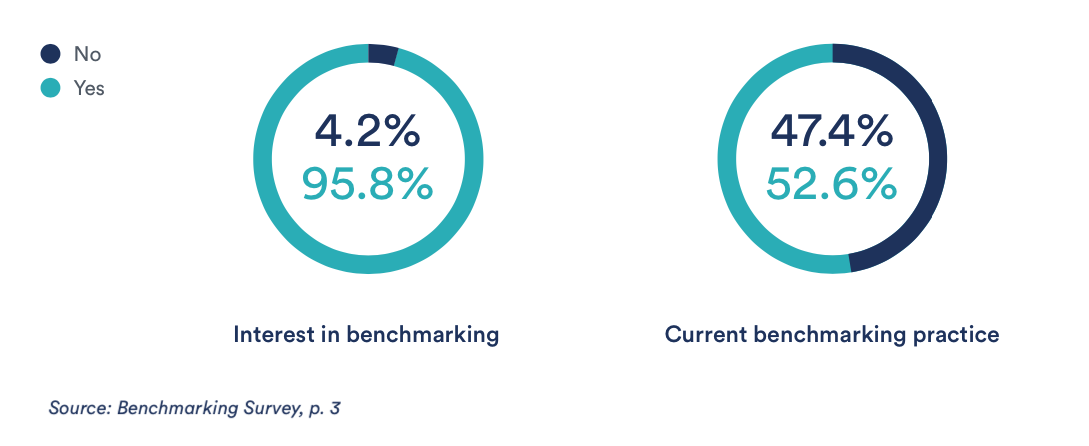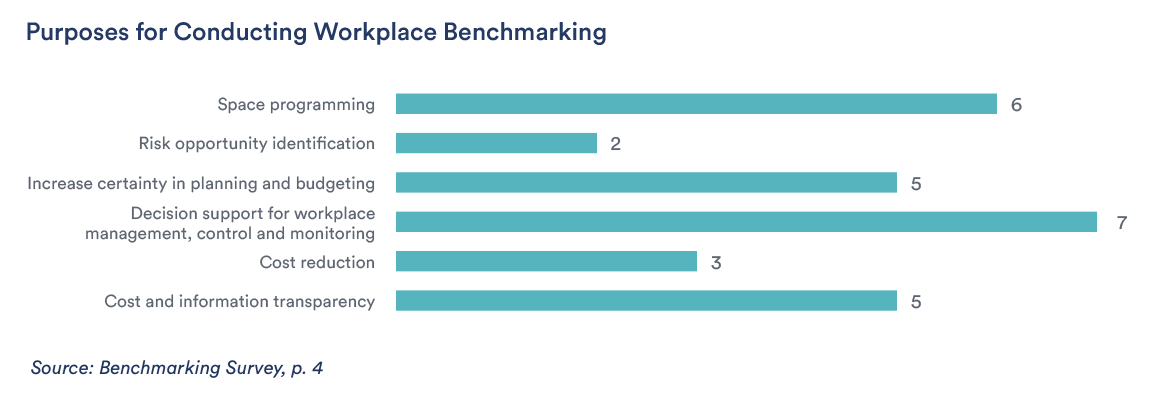In times of COVID-19, successfully managing the office space and enabling employee mobility have become a business critical need. Benchmarking practices that monitor key metrics of different areas ease the required surveillance of office space – but not only in exceptional times.
The Institute of Facility Management (IFM) at ZHAW Zurich University of Applied Sciences and Locatee have joined forces to develop a benchmarking framework aimed at providing guidance on using space utilisation data for internal and external benchmarking. Therefore, they conducted a survey, asking CRE stakeholders about the value of different benchmarking areas and performance metrics.
Are you interested in the outcome of the survey?


According to the results, the main interests lie especially in space utilisation and density. But not as one might expect, these areas are less of an interest for cost reduction purposes but serve as support when it comes to workplace decisions. “The tendency for performance management and benchmarking is to become a core component of workplace management and an important activity to accompany organisations in the strategic management and development of their workplaces.” (Benchmarking Survey, p. 5)

Multiple studies have shown the importance of employee experience, such as CBRE’s Workplace Survey Research Report about the influence of workplace experience on employee engagement. This trend turned out to have an incremental impact also on benchmarking interests: survey participants stated to expect that areas such as the quality of workspaces will gain remarkable attention and demand for more user-centric metrics at the same time.
For more information about user-centric use cases, consult the Use Case Guide about how to navigate the complex smart building landscape!

 4’
4’




